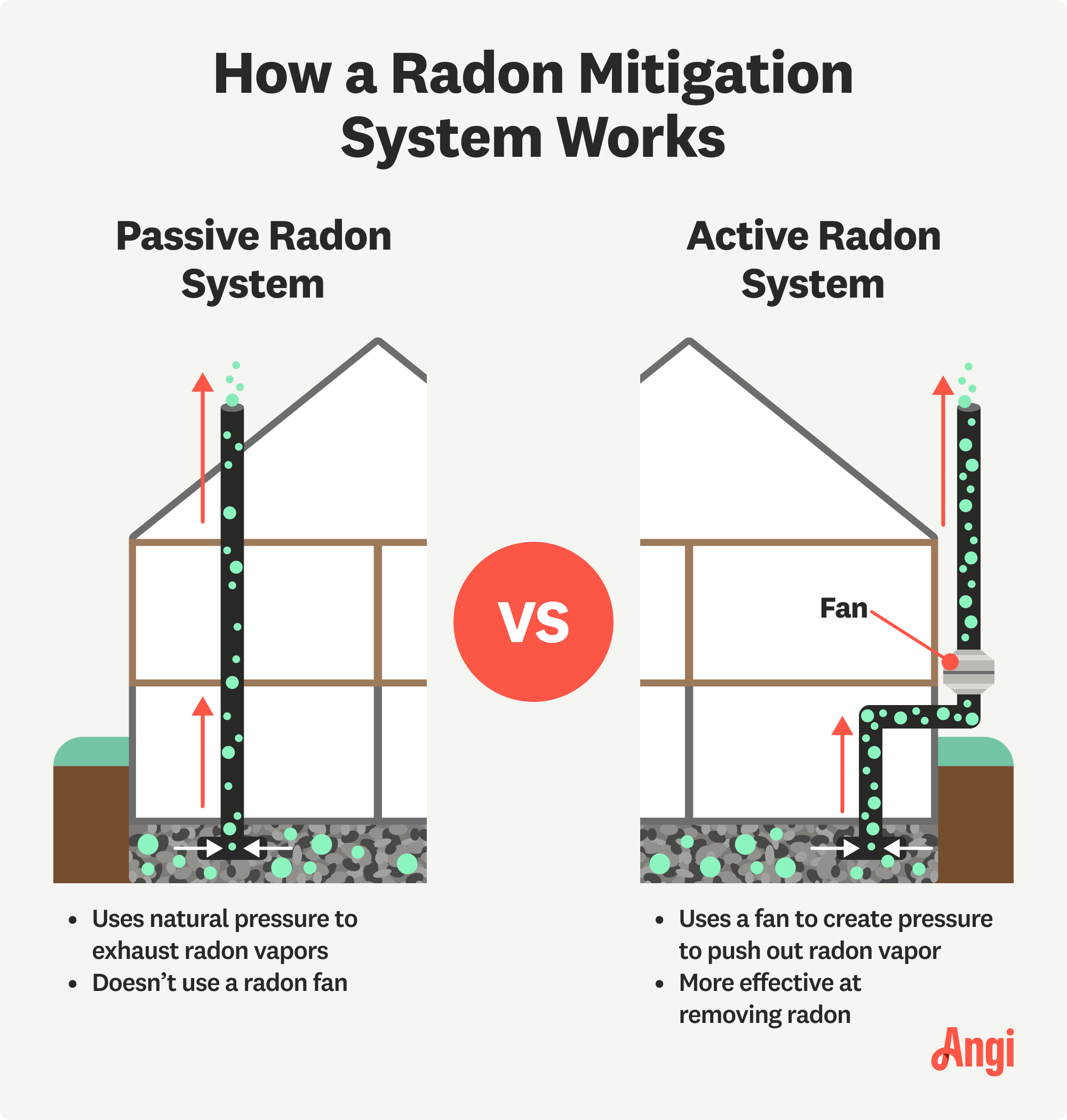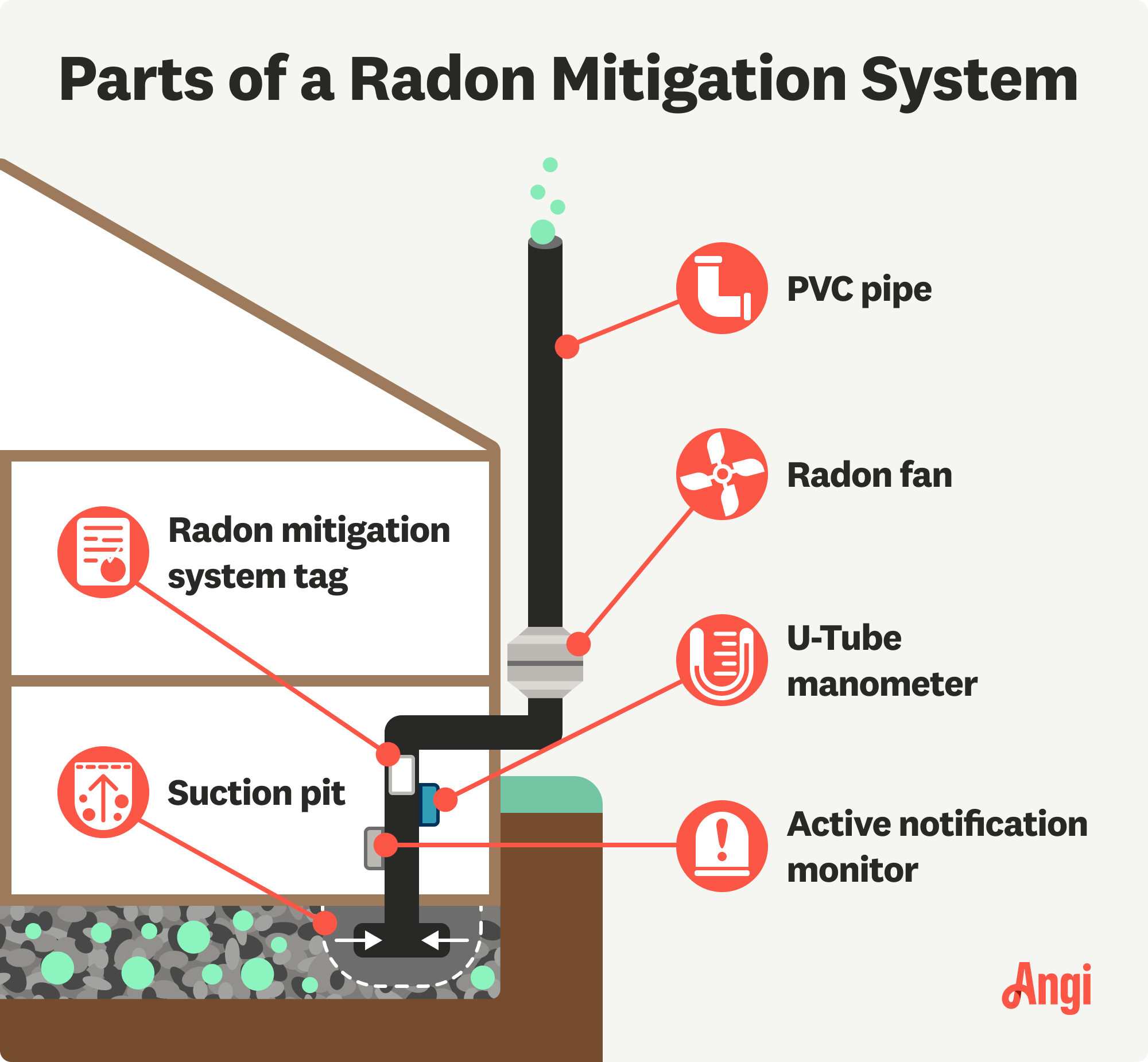
You cannot see, smell, or taste radon, but it may still be a problem in your home. Before hiring a pro, find out how much radon testing costs using this guide.
Breathing safe indoor air is worth the effort


A radon mitigation system reduces radon gas to safe levels in your home.
It ushers radon out of a home using pipes, pumps, and vents.
DIYing a radon mitigation system isn’t recommended.
You can take preliminary DIY steps to prep for the pro to install a system.
If you’ve recently discovered high radon levels in your home, you may wonder if building a mitigation system on your own is a good idea. But can a homeowner install a radon mitigation system using DIY methods? With the risks involved and the scope of work required, most of the project should be left to a professional—but there are some parts you may be able to do yourself.
Learn how far you can go without the help of a pro and when you should defer to the experts instead.

Radon is a radioactive gas derived from natural uranium found in soil. It can be dangerous to humans over long periods of exposure. In fact, exposure to this substance is the number one non-smoking cause of lung cancer in the United States.
A natural byproduct of the decaying uranium in rocks and soil, radon can enter and build up in homes without preventative measures in place. What’s worse, it’s colorless and odorless which makes it difficult to detect without proper radon testing.
As for how to get rid of radon, a mitigation system is your best and only option. There are three types of these systems—sub-slab suction, drain-tile suction, and sub-membrane—and they all do the same thing: pull radon out of your home through a series of vents and pipes.

No matter which radon mitigation system you opt for, these are the components you’re most likely to find in each one and what they do.
Radon fan: This feature is installed in a cavity in the roof or an attic and carries radon from the inside to the outside of a home. Because its job is so important, radon fan replacements cost more than replacing other broken parts.
U-tube manometer: This part is placed in an easily visible location and will signal to homeowners whether or not the radon fan is working.
Radon mitigation system tag: Located below the U-tube manometer, this tag contains all of a system’s pertinent information, like when and who installed it, plus their phone and license number.
Active notification monitor: This alarm will ring if the radon fan isn’t working properly.
PVC Pipe: This pipe connects the radon fan at the top of a home to the suction pit at the base.
Suction pit: Located in or near the home’s foundation, this part pulls radon from the soil below and carries it up through the PVC pipe to the radon fan, which moves it outside.

Radon is a hazardous gas that comes with a number of risks when improperly handled, and there’s no way to avoid contact with it when building a system like this.
What’s more, the system needs to be installed correctly for it to work at all, which can be difficult to do if you don’t have all the right skills, equipment, and knowledge of local codes and regulations. But who installs radon mitigation systems? You should hire a radon reduction specialist near you. They can provide radon testing to see how high your home’s levels are and install a mitigation system if necessary.
Here’s a look at what the pros will do throughout the process:
Conduct a radon air quality test to see how high the gas levels are in your home.
Create a suction point where radon levels are highest.
Dig a sub-slab pit, which will create a larger surface area and enable the radon fan to remove radon most efficiently.
Install the PVC pipe from the bottom to the top of the house.
Construct an exit vent in the roof or attic and install a radon fan.
Test the system and make adjustments as necessary.
Although DIYing a radon mitigation system isn’t recommended, there are some things you can still do—like clearing an area of your basement for the pros to work or learning how to test for radon yourself.
Exposure to radon over a long period of time can cause serious health problems, including lung cancer. Lowering radon in your home requires professional knowledge and skills only available by hiring a radon mitigation pro.
From average costs to expert advice, get all the answers you need to get your job done.

You cannot see, smell, or taste radon, but it may still be a problem in your home. Before hiring a pro, find out how much radon testing costs using this guide.

Radon is a gas that you can't see or smell and is harmful to your health. If your home has radon, you need to know who installs radon mitigation systems.

What is radon gas? Find out what this radioactive gas is, why it is dangerous, how it gets in your home, and how to mitigate it.

Your home’s radon fan replacement cost is minimal in relation to its necessity. However, a few factors vary the project's price.

How long does a radon mitigation system last? A properly installed and maintained system can last 20 years or more, but various issues can reduce the life span.

Get clear answers on how much radon remediation costs, including average prices, key cost factors, and tips to save money on your home’s radon mitigation.